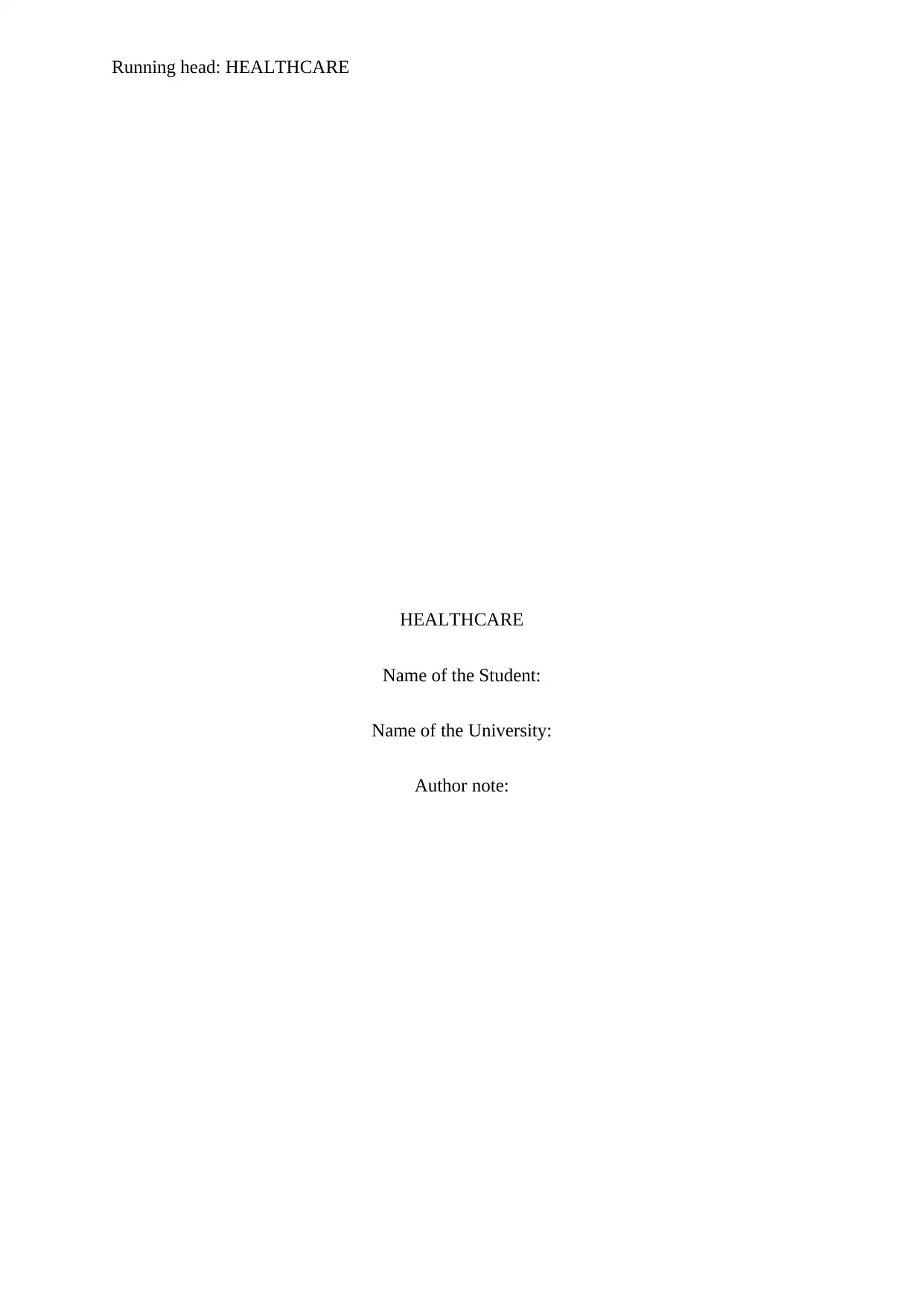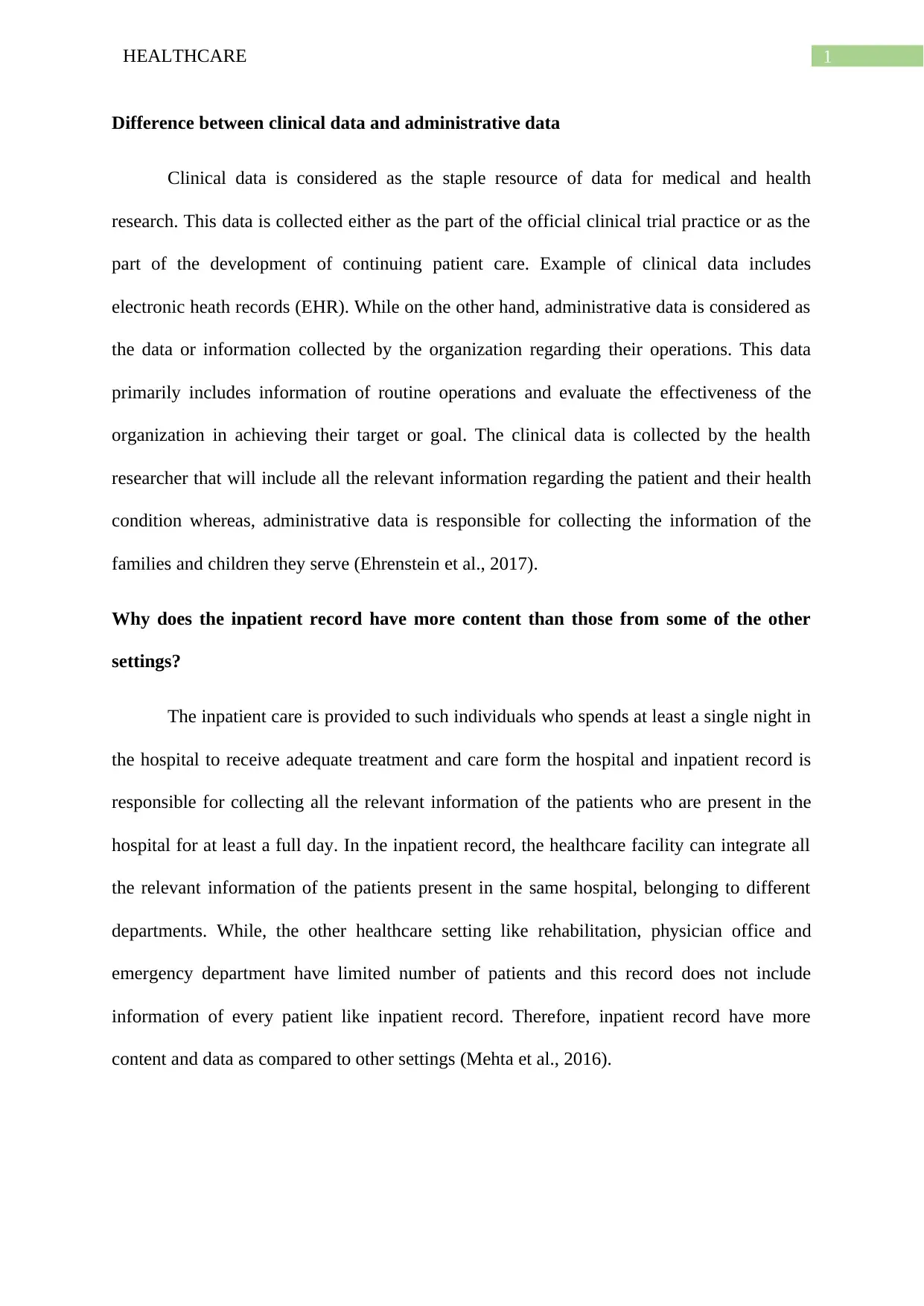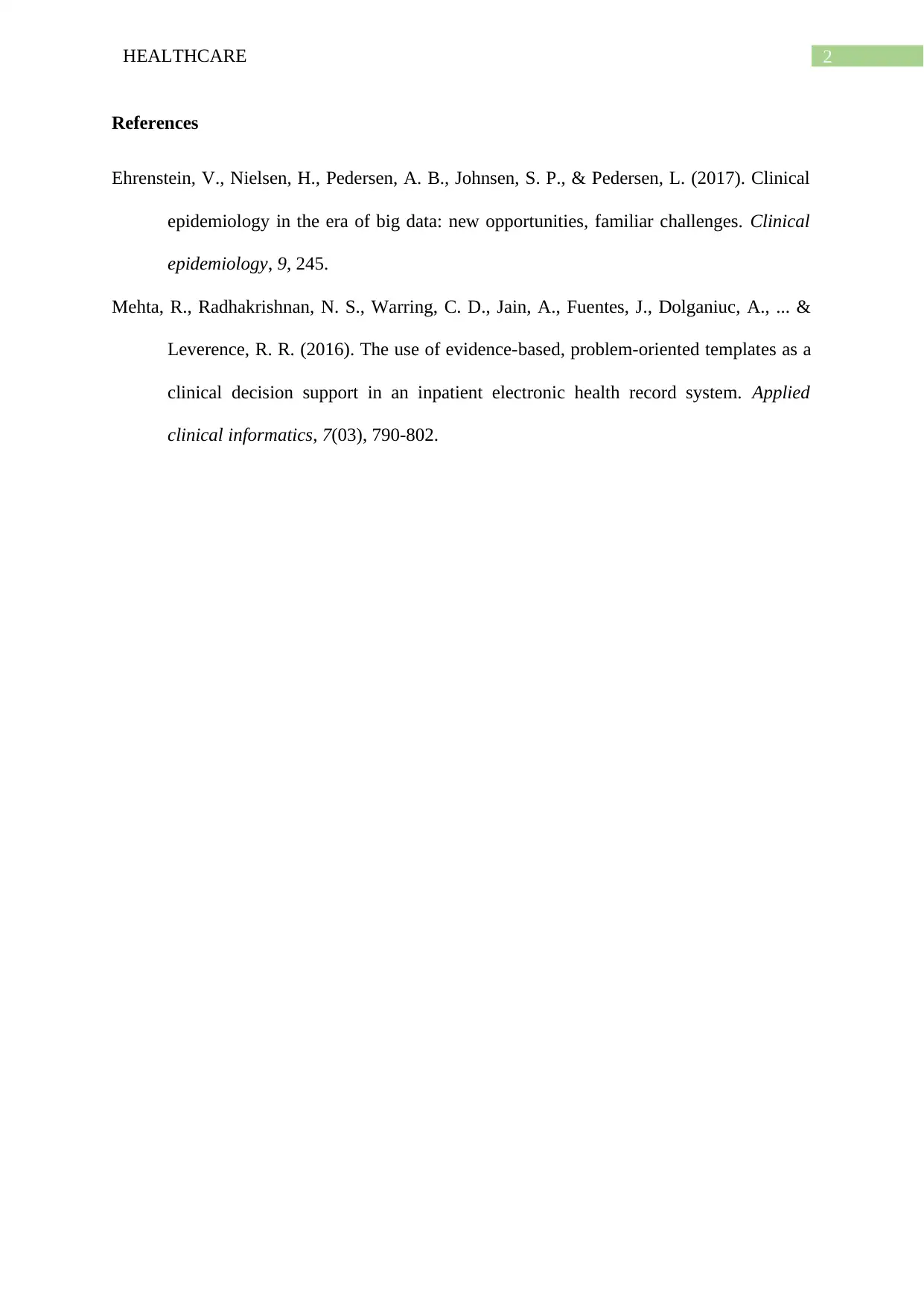Analysis of Healthcare Data: Inpatient Records and Data Comparison
VerifiedAdded on 2022/12/23
|3
|447
|100
Report
AI Summary
This report delves into the analysis of healthcare data, focusing on the comparison between inpatient records and other healthcare settings. It differentiates between clinical and administrative data, highlighting the significance of electronic health records (EHRs) in clinical practice. The report explains why inpatient records contain more comprehensive data compared to settings like rehabilitation centers, physician offices, and emergency departments, primarily because they consolidate information from various hospital departments. The report also emphasizes the role of inpatient records in patient care and healthcare research, citing the use of evidence-based templates within electronic health record systems to improve clinical decision-making. This analysis underscores the importance of data-driven insights in enhancing healthcare delivery and patient outcomes.
1 out of 3










![[object Object]](/_next/static/media/star-bottom.7253800d.svg)